Submitted by WA Contents
Avasara Academy, resembling an unfinished structure, educates young women in the moorland of Pune
India Architecture News - Jun 06, 2017 - 10:32 24045 views
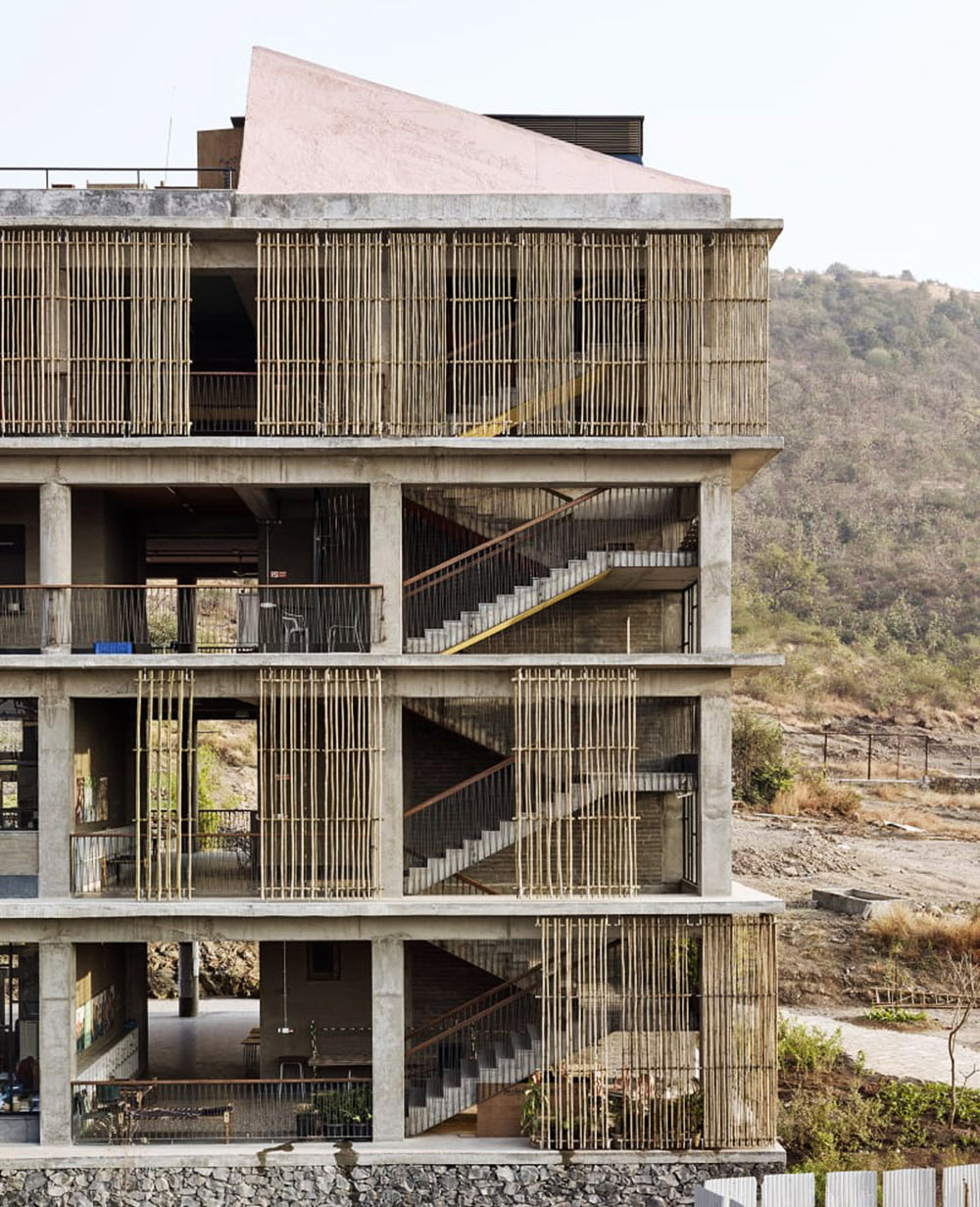
Avasara Academy is a newly-opened school on the moorland of Pune, India to be the leader of education and educate young women in the city's agrarian hillside. Designed by Indian architecture studio Case Design, the school was entirely built from recycled and local sourced materials collected from surrounding of the campus and Transsolar Klimaengineering developed a particular passive climate strategy to achieve net-zero energy for the school with a modest budget.
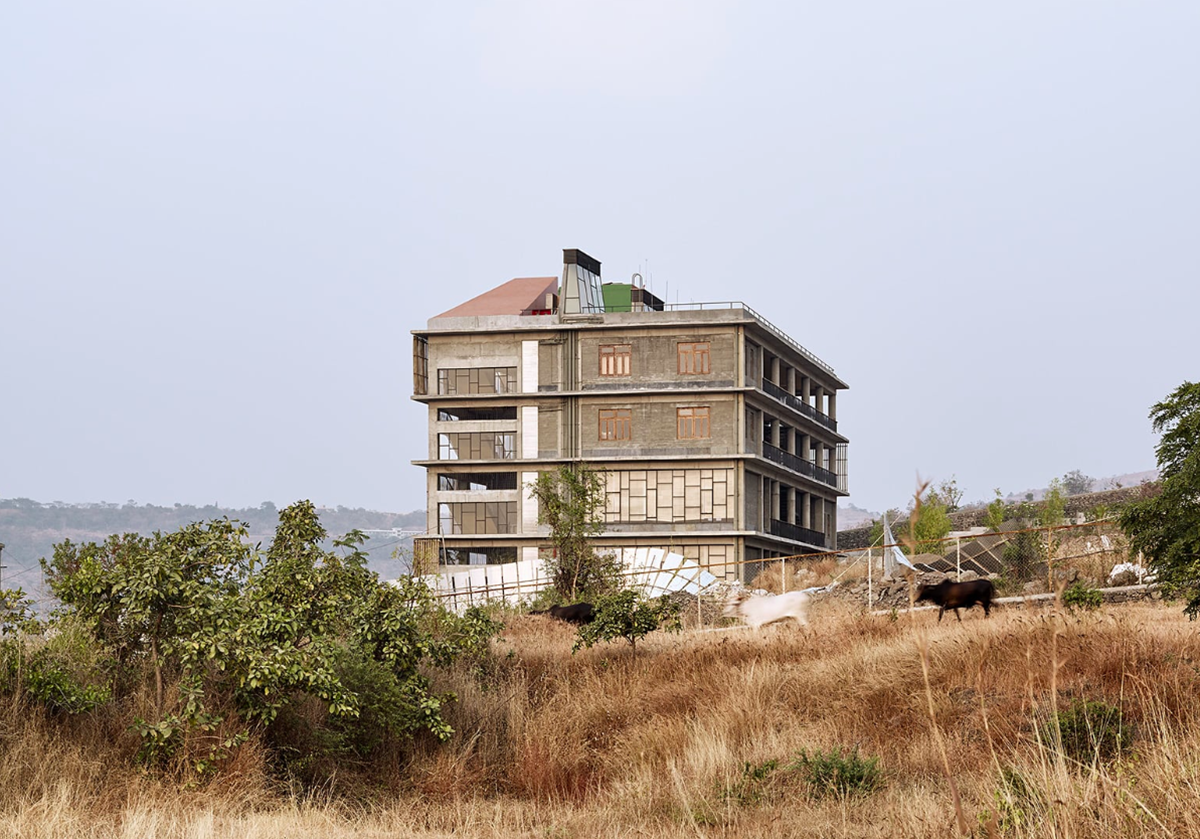
Settled into the valley slope above the village of Lavale, the 4.3 acre campus is located 10 km west of Pune and roughly 145 km southeast of Mumbai. The residence campus, conceived as the growing township of Knowledge City, consists of seven similar buildings and each with classrooms on level 1 and 2, and student dormitory and faculty residences on level 3 and 4.
All the residences on the campus were designed as a collection of simple structures arranged around an informal series of walkways, courtyards, gardens and terraces.
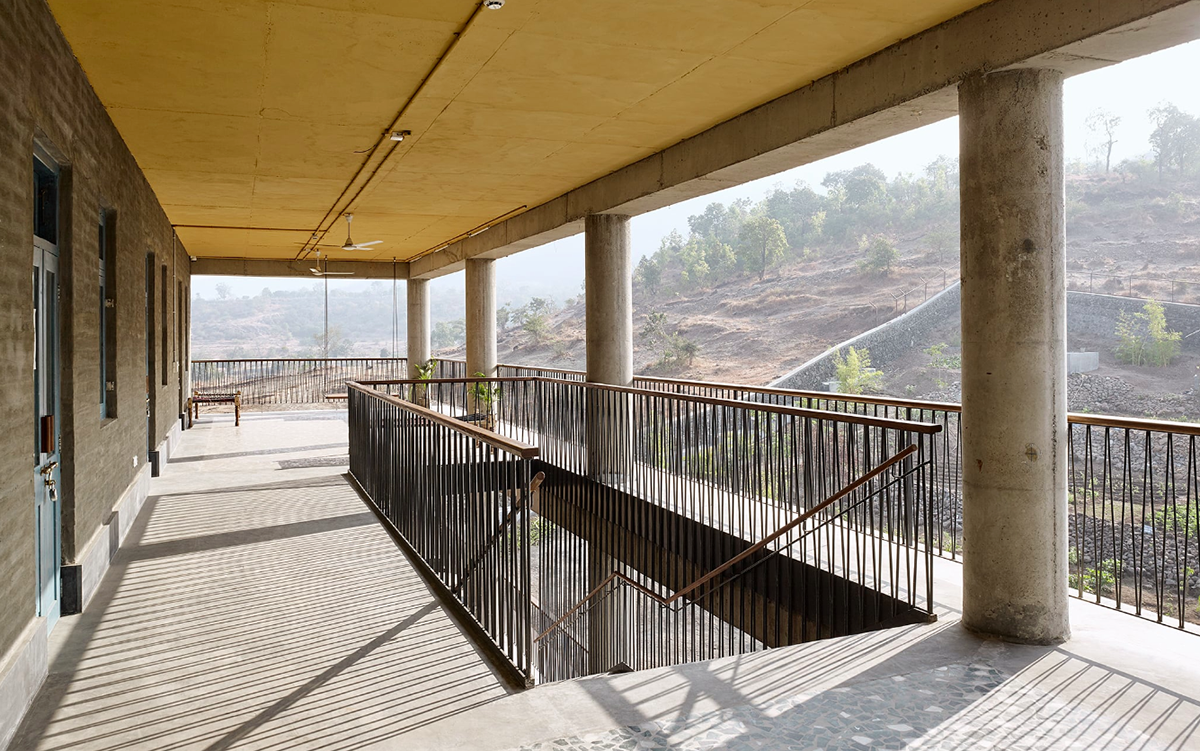
"Culled from local and universal examples of academic, domestic, public and sacred spaces, the architecture responds to site, program and climate, addressing the needs of the community to provide a sanctuary for learning," said Case Design.
The team uses a climate responsive massing, strategic program placement, and locally sourced wooden shades in combination with overhangs set the stage for passive climate strategy. And, a meticulously designed natural air flow path through all the occupied spaces in the building using architectural and structural infrastructure create year-round comfortable learning and living environment.
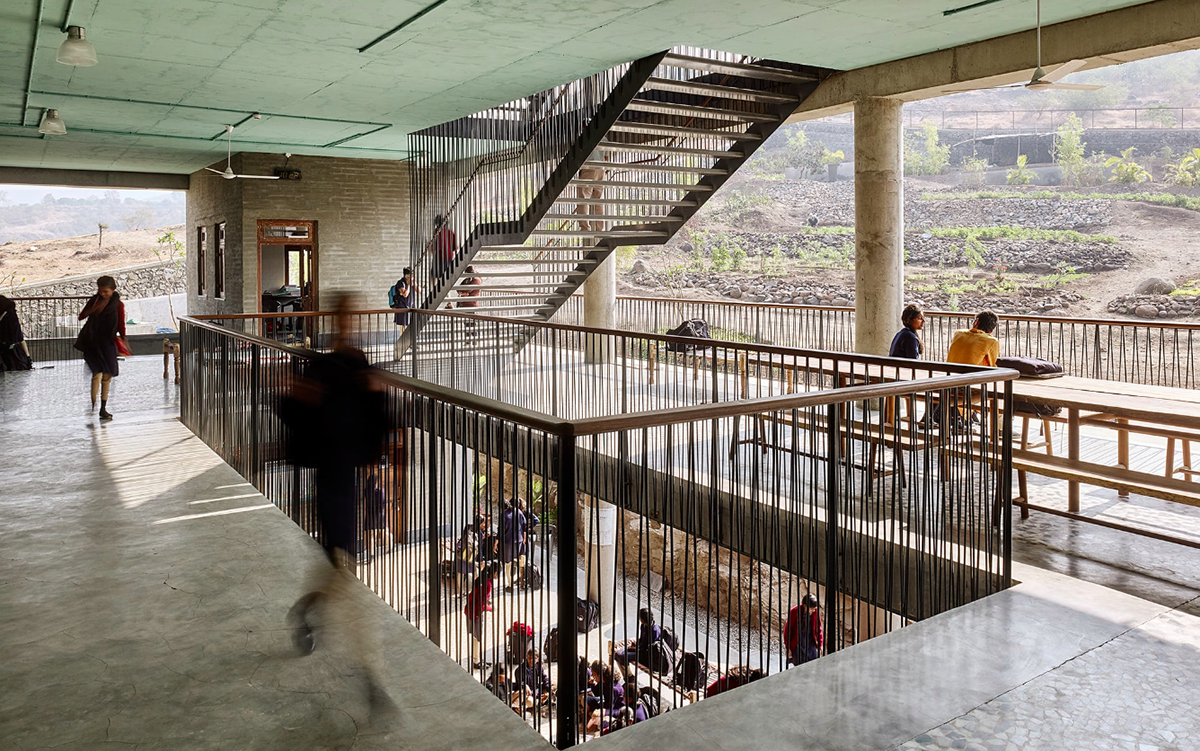
The classrooms are placed around a central circulation in the first and second floors and in the third and fourth floors, there are also private residences to provide accommodation.
The internal earth tube cuts throughout the building to provide cool air. Bamboo shading also wrap two facades of the building, which are partially open and close.
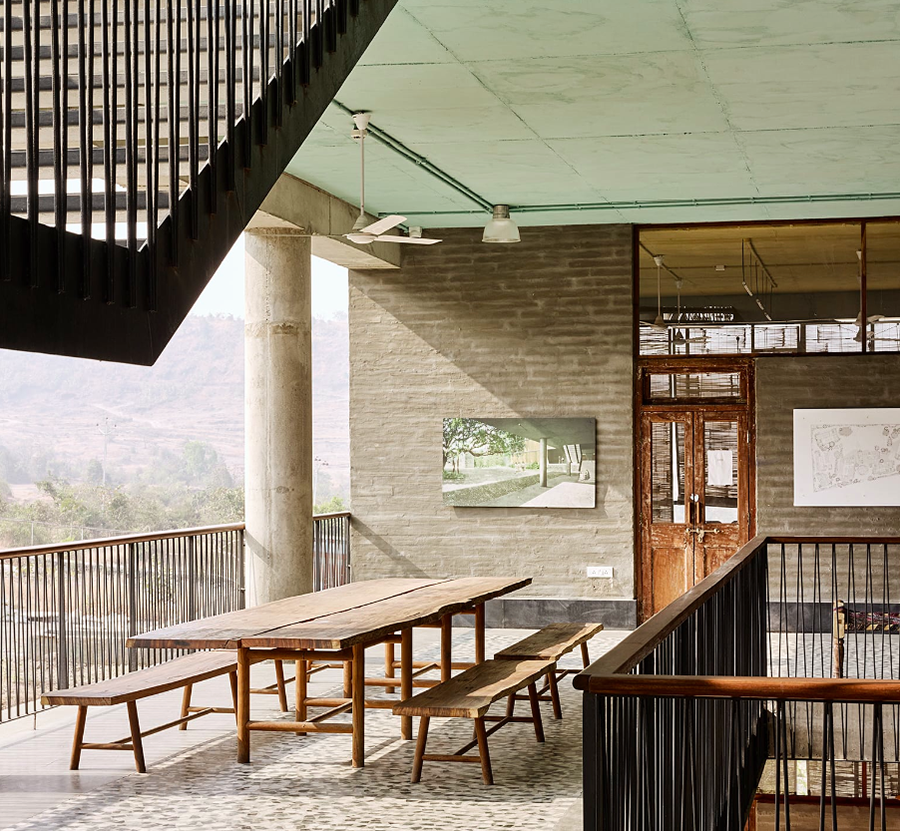
"Outside air is drawn through a series of earth ducts, where it is passively pre-cooled, before being supplied into the classrooms and livings spaces. The strategy of supplying outside air through earth ducts also allows natural ventilation while eliminating any outside noise transmission (from the school campus) into classrooms," said Transsolar Klimaengineering.
"Beautifully detailed concrete construction and locally sourced stone interior provide necessary exposed thermal mass in the occupied spaces resulting in a moderate, more consistent radiant temperature inside the building," the studio added.
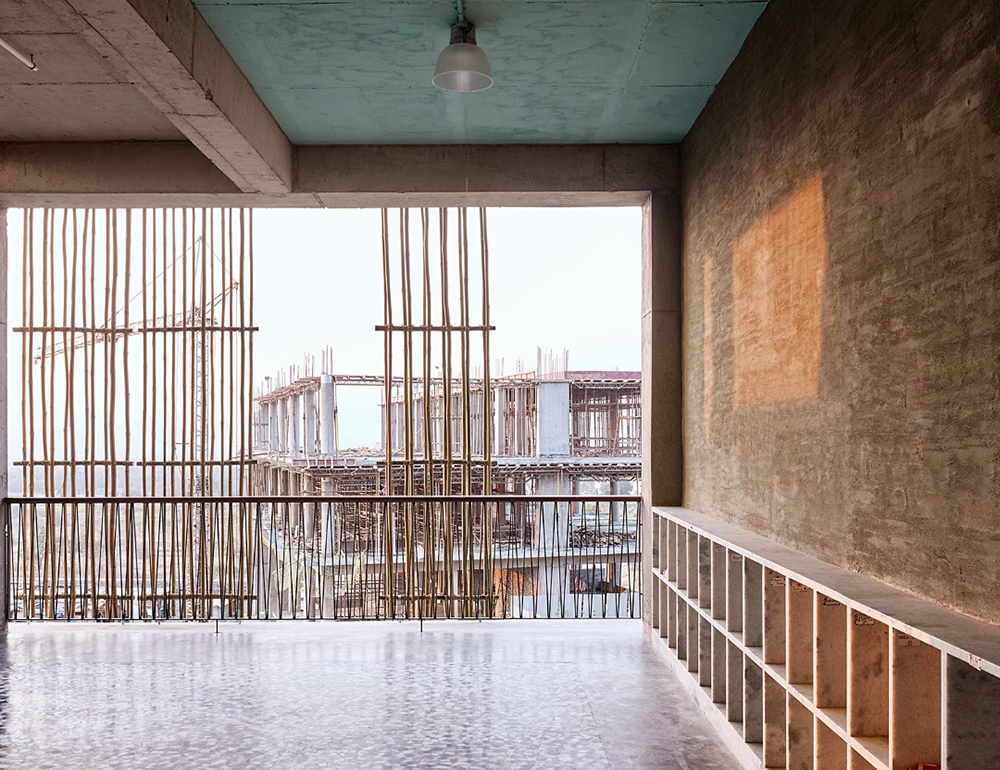
"The air from all classrooms and living spaces passively transfers in three separate, centrally located “exhaust cavities” which are integrated in the structural core of the building and eventually extends out as solar chimneys above roof level. These chimneys, using solar heat from the sun, are designed to passively drive the entire air flow, and provide cooling, throughout the building."
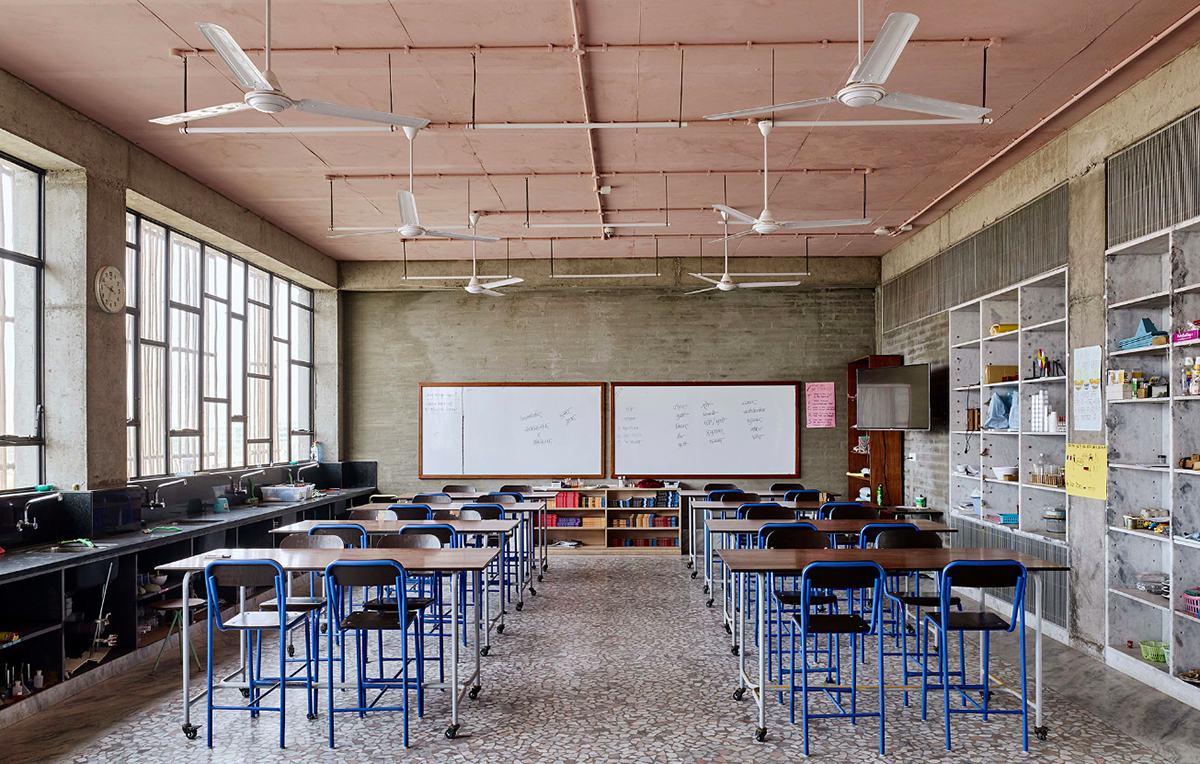
Due to the use of local sources and passive heating-cooling systems, the initial construction cost was reduced by approximately 7% through elimination of mechanical systems, and reduced annual energy cost by 80% due to a completely passive design.
"A handful of solar water heaters provides hot water for showers and PV panels on the building roof supplies electricity for ceiling fans and electric lighting in the building, making it also a Net-zero Energy Building," detailed Transsolar Klimaengineering.
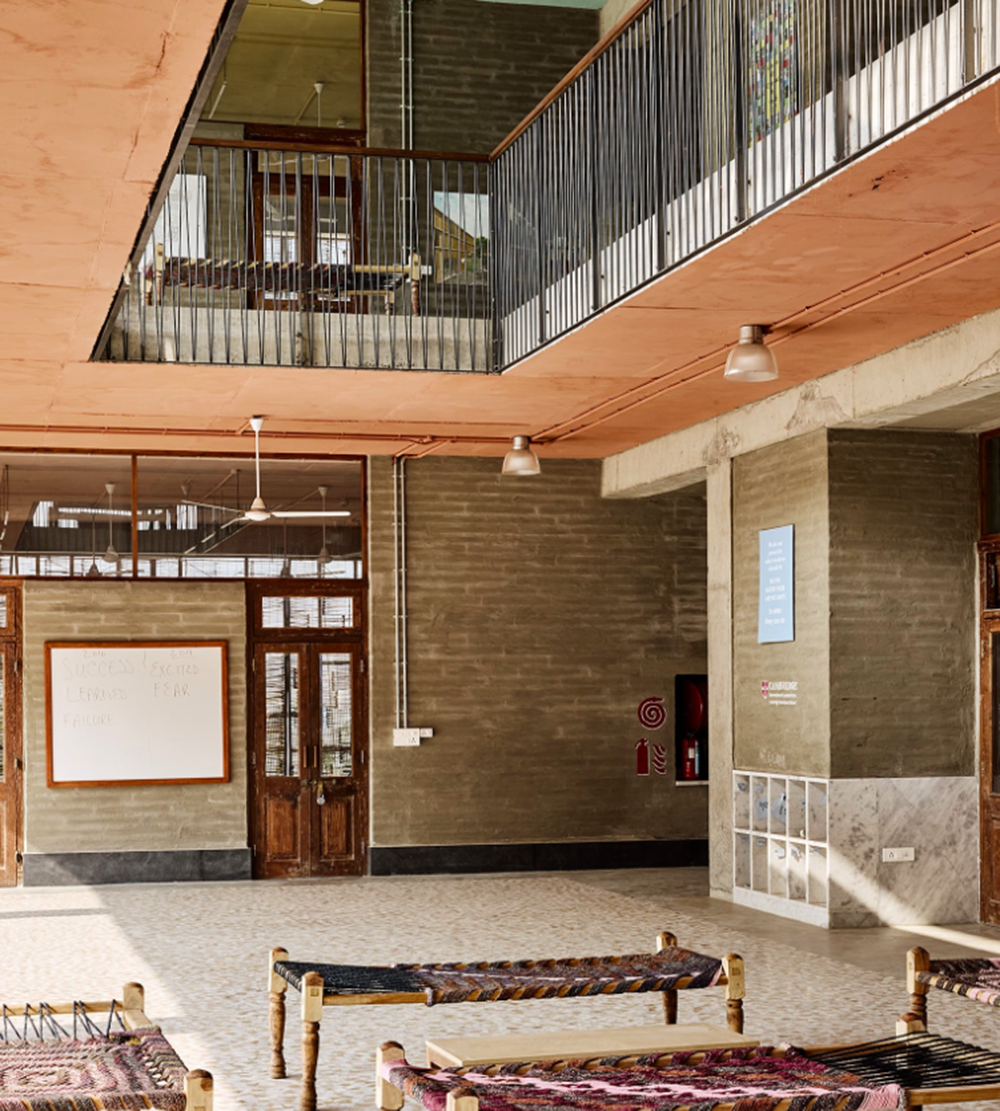
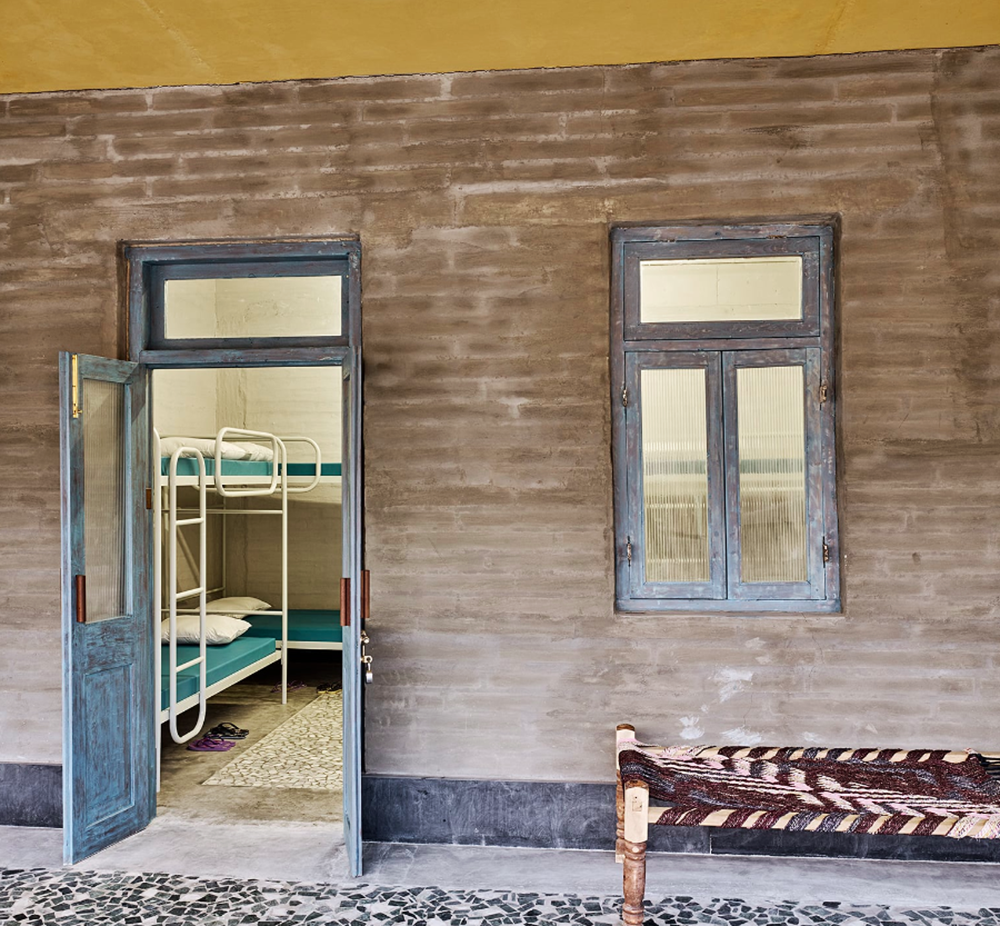
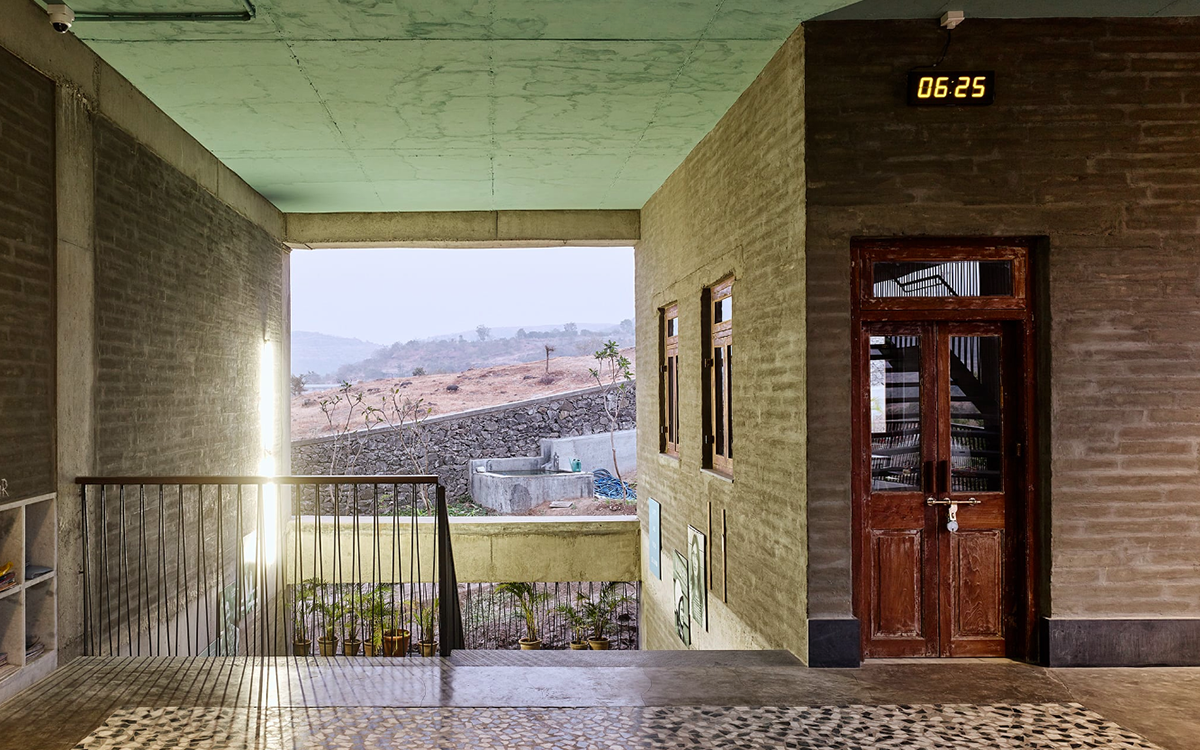
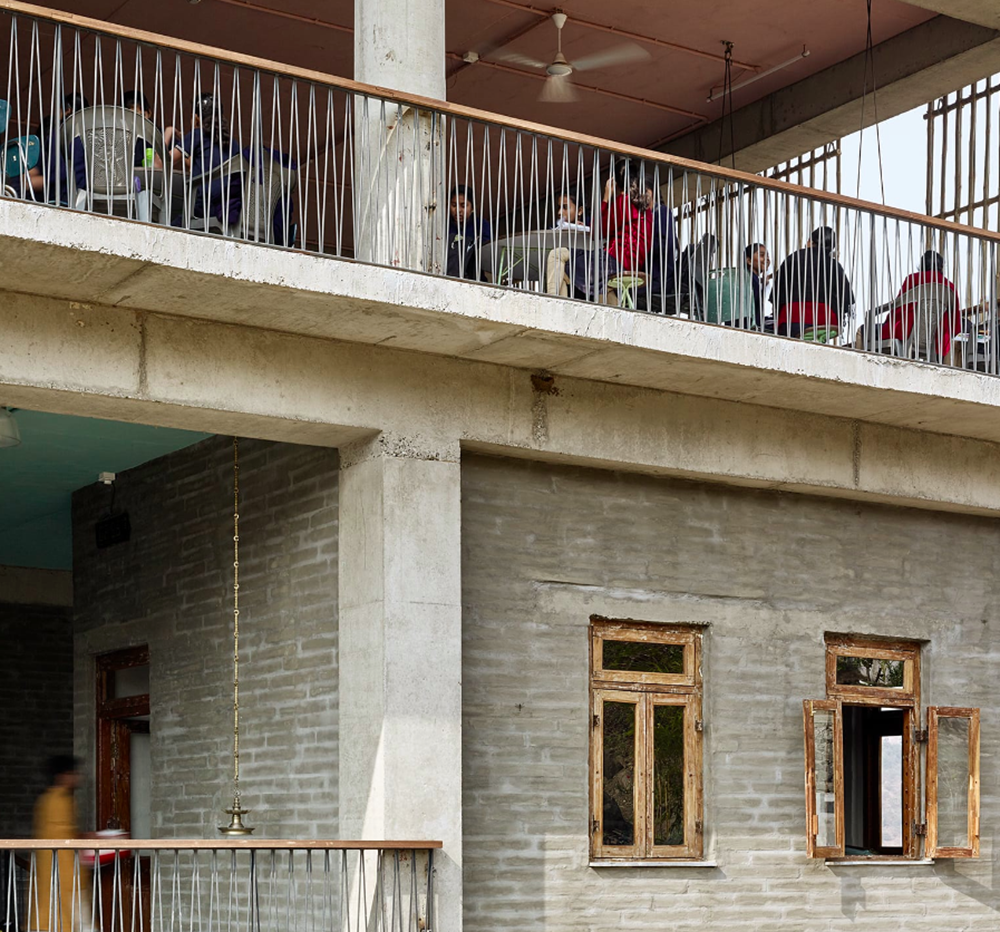
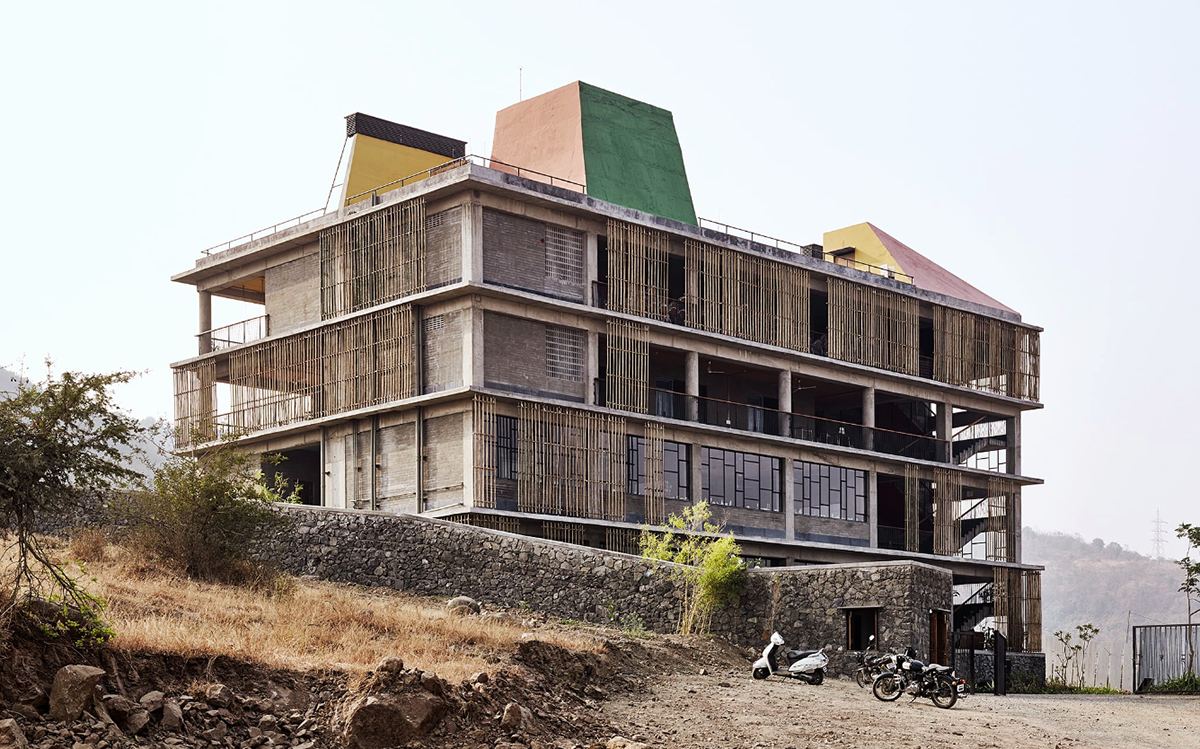
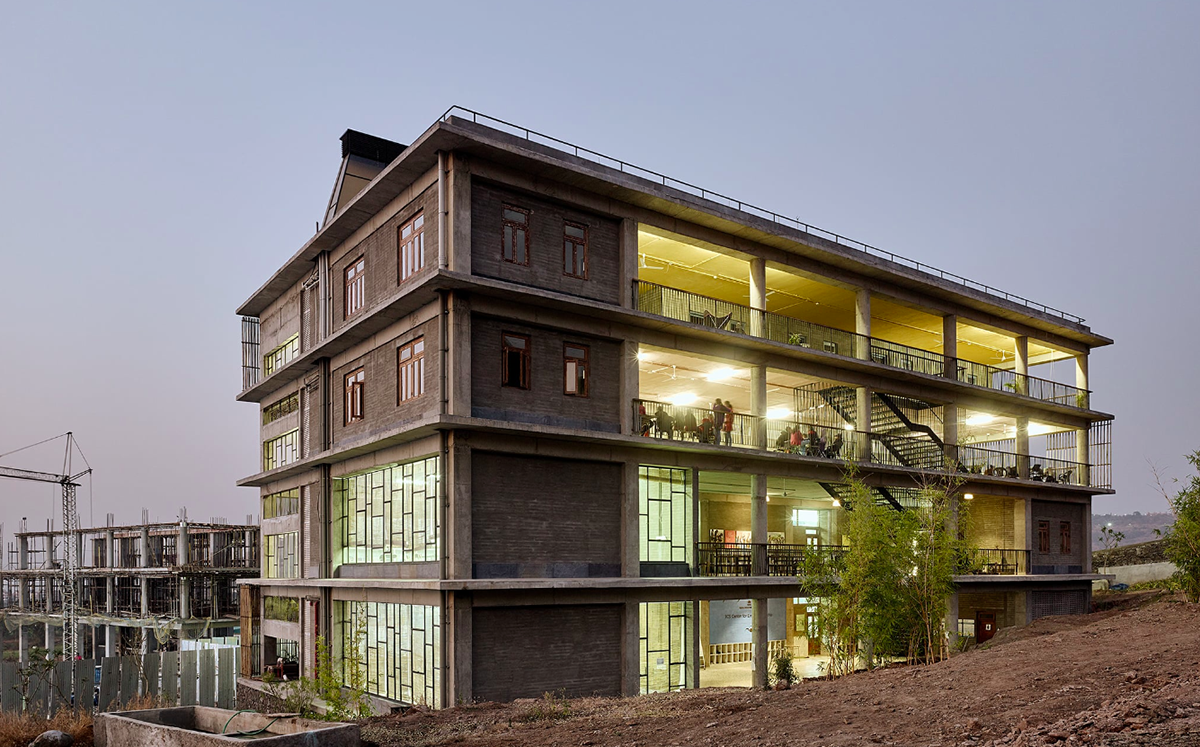
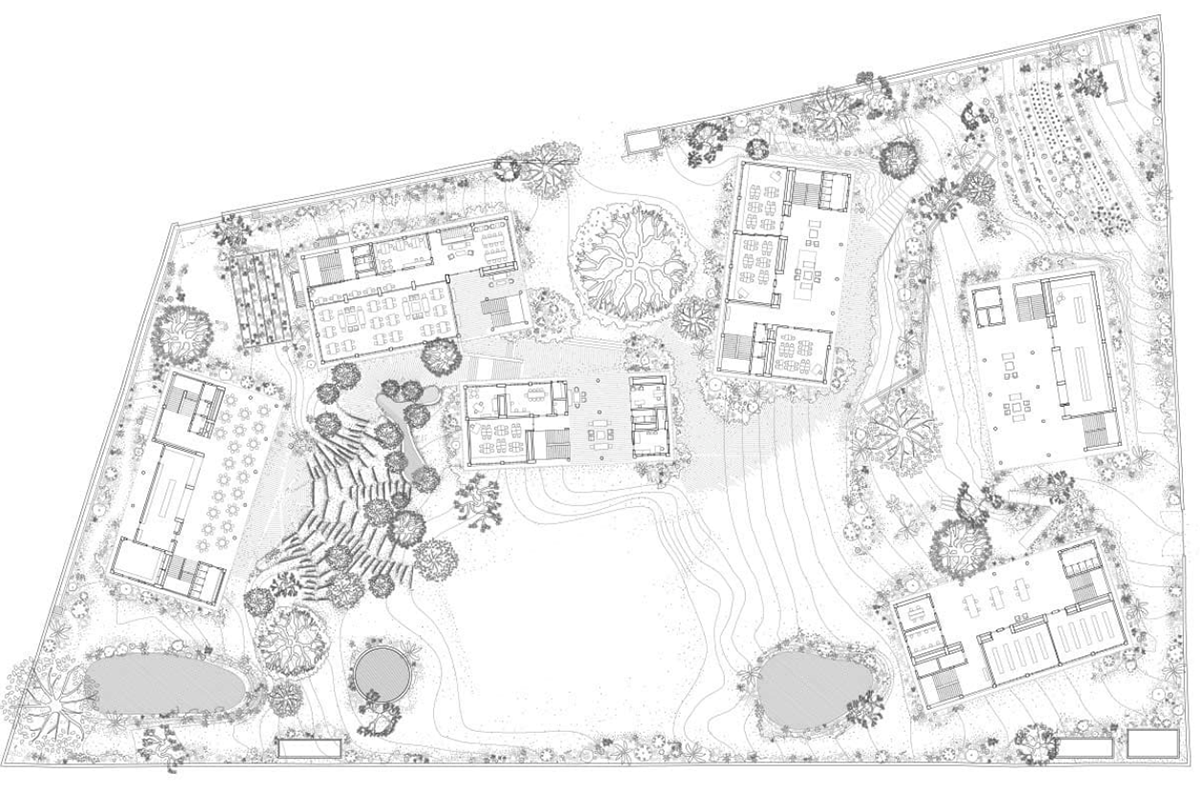
Site plan of the campus
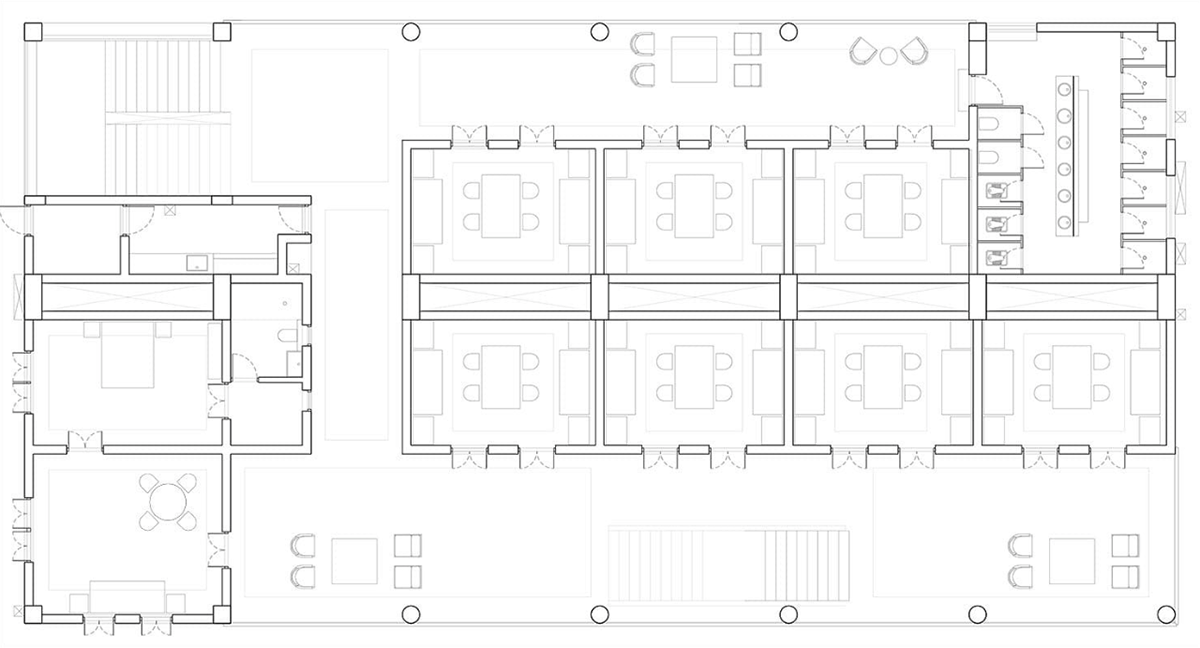
Plan-1
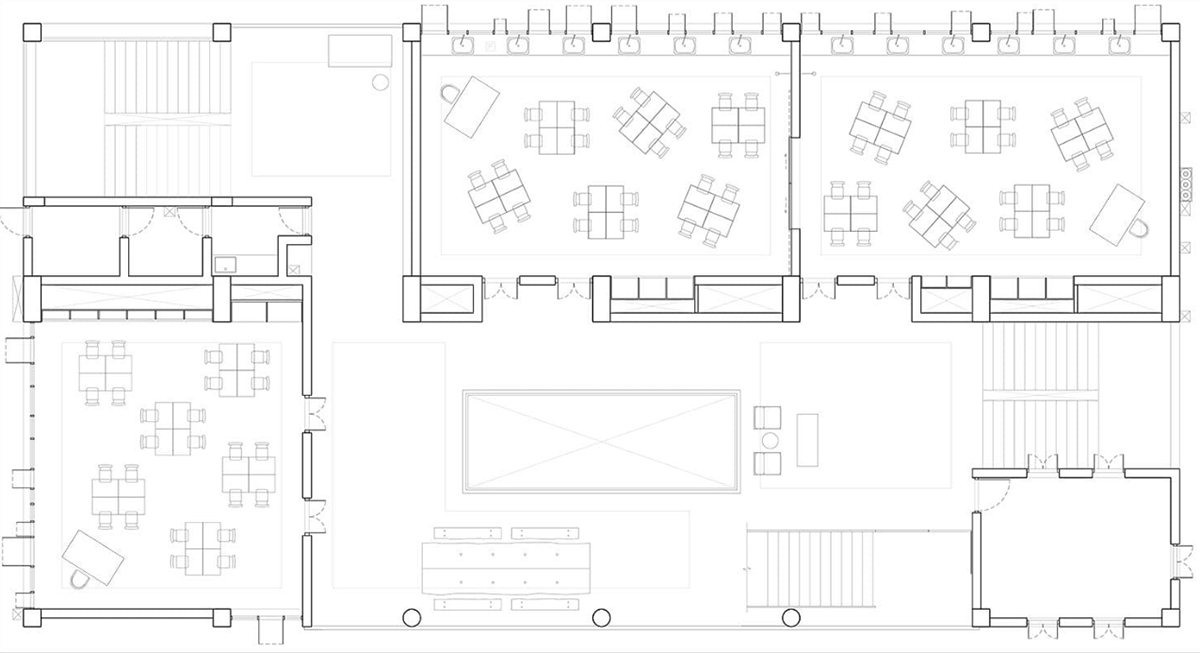
Plan-2
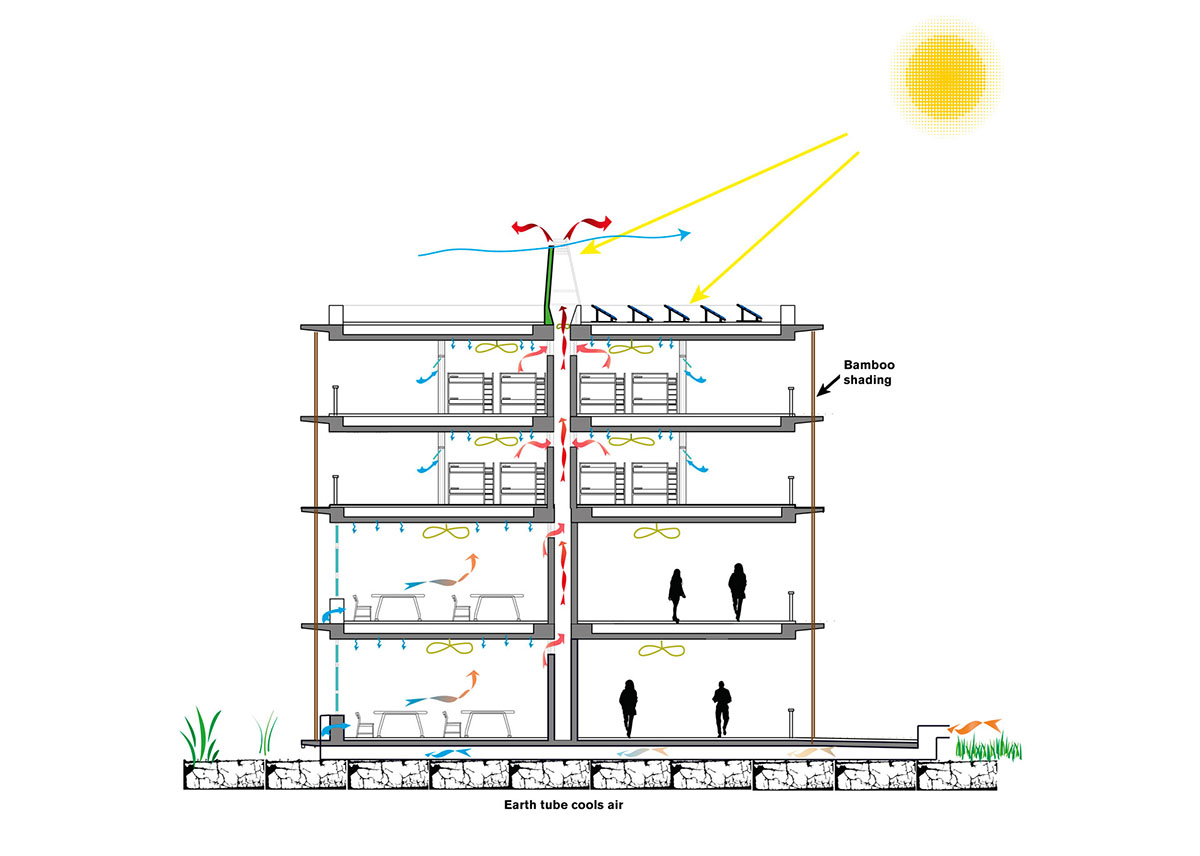
Section
All images © Ariel Huber
